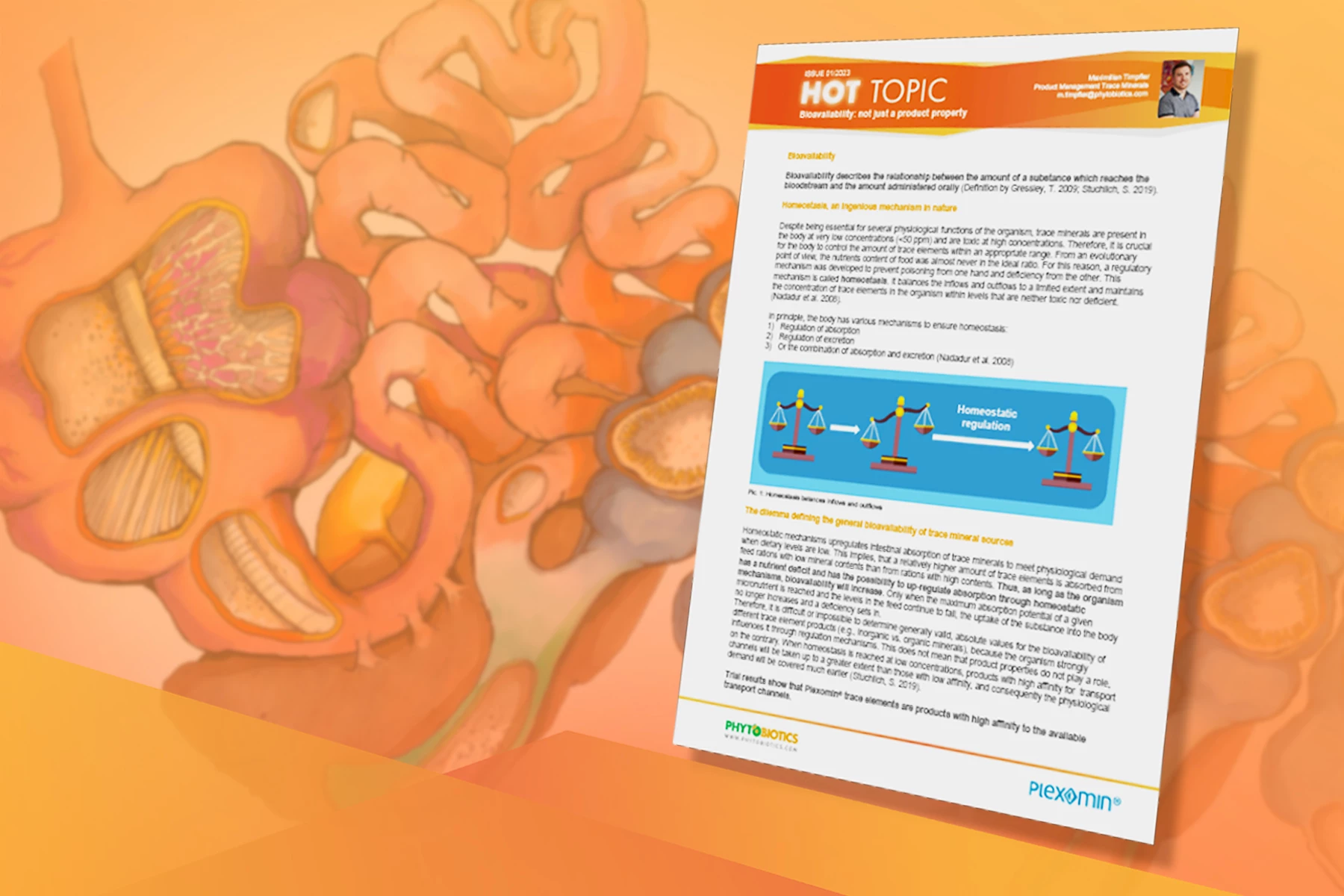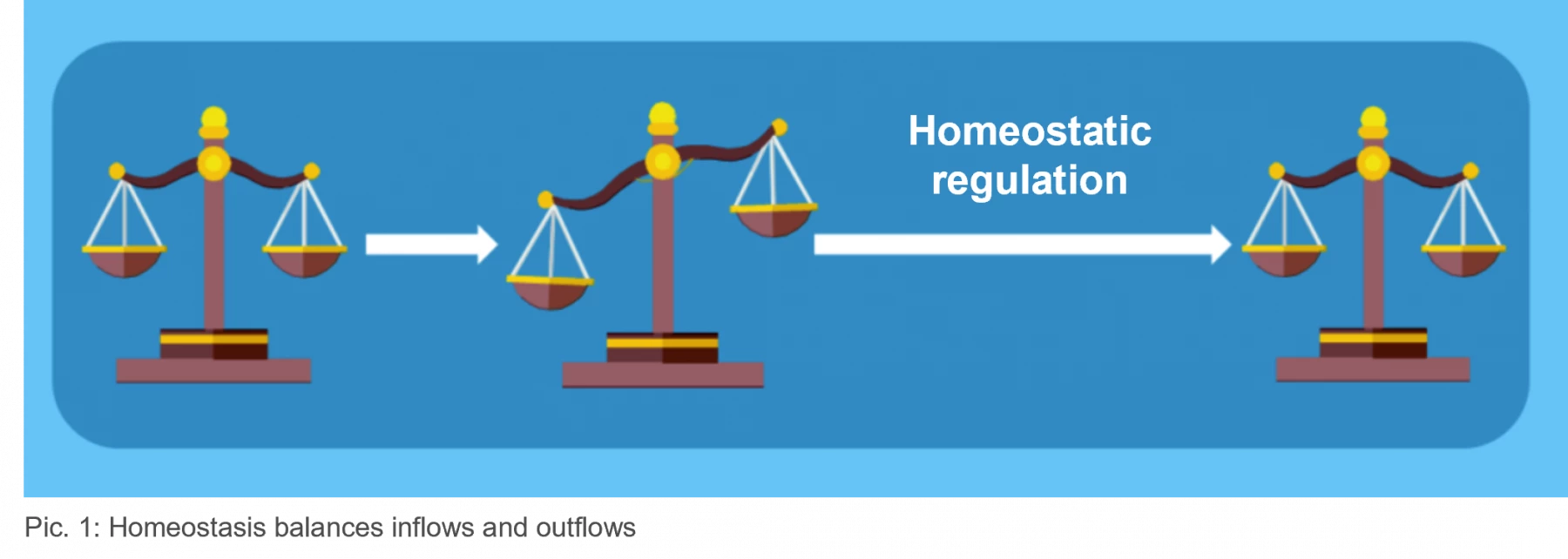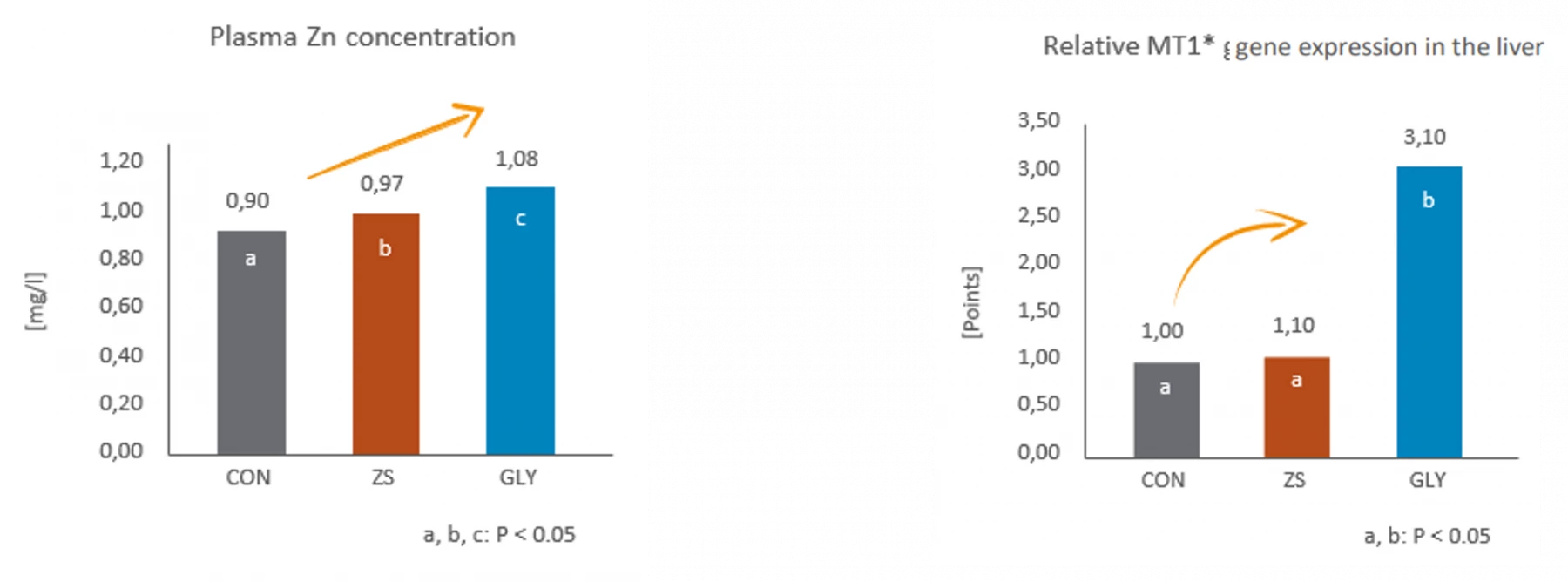
Bioavailability
Bioavailability describes the relationship between the amount of a substance which reaches the bloodstream and the amount administered orally (Definition by Gressley, T. 2009; Stuchlich, S. 2019).
Homeostasis, an ingenious mechanism in nature
Despite being essential for several physiological functions of the organism, trace minerals are present in the body at very low concentrations (<50 ppm) and are toxic at high concentrations. Therefore, it is crucial for the body to control the amount of trace elements within an appropriate range. From an evolutionary point of view, the nutrients content of food was almost never in the ideal ratio. For this reason, a regulatory mechanism was developed to prevent poisoning from one hand and deficiency from the other. This mechanism is called homeostasis. It balances the inflows and outflows to a limited extent and maintains the concentration of trace elements in the organism within levels that are neither toxic nor deficient. (Nadadur et al. 2008).
In principle, the body has various mechanisms to ensure homeostasis:
1)Regulation of absorption
2)Regulation of excretion
3)Or the combination of absorption and excretion (Nadadur et al. 2008)

The dilemma defining the general bioavailability of trace mineral sources
Homeostatic mechanisms upregulates intestinal absorption of trace minerals to meet physiological demand when dietary levels are low. This implies, that a relatively higher amount of trace elements is absorbed from feed rations with low mineral contents than from rations with high contents. Thus, as long as the organism has a nutrient deficit and has the possibility to up-regulate absorption through homeostatic mechanisms, bioavailability will increase. Only when the maximum absorption potential of a given micronutrient is reached and the levels in the feed continue to fall, the uptake of the substance into the body no longer increases and a deficiency sets in.
Therefore, it is difficult or impossible to determine generally valid, absolute values for the bioavailability of different trace element products (e.g., inorganic vs. organic minerals), because the organism strongly influences it through regulation mechanisms. This does not mean that product properties do not play a role, on the contrary. When homeostasis is reached at low concentrations, products with high affinity for transport channels will be taken up to a greater extent than those with low affinity, and consequently the physiological demand will be covered much earlier (Stuchlich, S. 2019).
Trial results show that Plexomin® trace elements are products with high affinity to the available transport channels.
Effect of Zn bisglycinate or zinc sulphate on zinc metabolism in growing lambs
In a trial at Iowa State University (USA), 46 lambs were fed a Zn-deficient feed diet for a period of 45 days. Subsequently, two of the three treatment groups received a low supplementation of 15 ppm Zn. One treatment group received this from inorganic zinc sulphate (ZS) and the other through the organic bisglycinate Plexomin® Bis-Zn 29 (GLY). After a feed adaptation period, blood samples were taken and the plasma Zn content was analysed. Furthermore, at the end of the experiment, genes associated with the intercellular storage of Zn in the liver (MT1) were analysed.

Results & Discussion
During the Zn-deficient phase in the first 45 days of the experiment, homeostatic mechanisms up-regulated the gene expression of Zn transporters (ZIP4, ZIP14, ZNT1) to increase intestinal Zn absorption. Then, when more Zn flooded the intestinal lumen by supplementation of 15 ppm Zn, the availability of Zn for absorption increased. Consequently, more Zn reached the blood stream and the Zn plasma content increased. Noteworthy, the observed increase was not the same in the two supplementation groups; it was significantly higher in the Plexomin® treatment group. Our findings indicate that Plexomin® bisglycinates have a higher affinity for the available absorption channels than inorganic sulphates. This hypothesis is supported by the results of gene expression of MT1 in the liver. MT1 functions as an intercellular storage for Zn (Nadadur et al. 2008). Thus, the significantly higher expression level of MT1 in the Plexomin® treatment group further suggests that higher amounts of Zn reached the body upon supplementation with Plexomin® Bis-Zn 29 than with ZnSO4.
Summary & Conclusion
Get more info on trail results and factors that can lead to a better bioavailability in the PDF.
Download the PDF here >>
Contact our experts or send us a message. We will contact you as soon as possible.